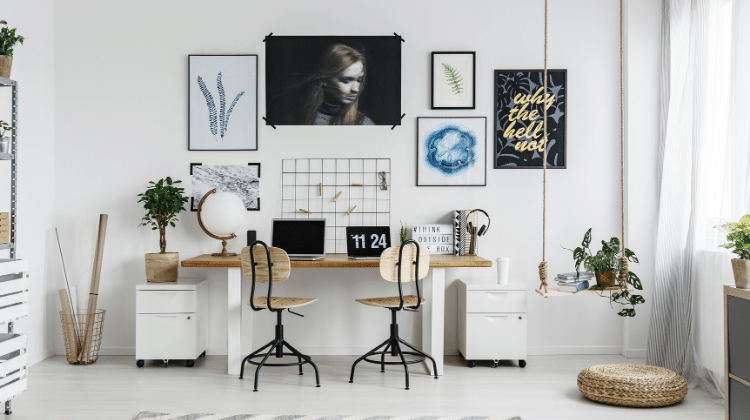
Brought to you by Penguin Basements:
A home office can be any place in the house. Some people are comfortable working with just a chair and the dining table, or even their own bed. However, if your business is growing fast and you prefer your own space to work, then it’s definitely time to seriously think about designing a home office. Here’s a list of pragmatic tips that will help you create the ultimate workspace for your business:
Decide on the Size of the Workplace
It’s important to give thoughtful consideration to the size of the home office. This really depends on how much space you need to work. If your work is entirely done on a computer, then you may not need a big desk or a room. But if you need to write or draw, you might need a bigger desk.
The space you need for the equipment you use, such as printers or measuring items, should factor into this decision as well. Once you know how much space you need, then you can decide on a place to set up the home office.
Give Your Office a Separate Space in the House
It’s highly recommended that you design a home office which can function on its own as an almost separate part of the house. That means, it’s best if the home office has its own entrance, guest bathroom, and so on.
Not everyone can afford adding new rooms, of course. In that case, consider a finished basement, where a space like the basement or the garage can be converted into a home office you can conveniently operate out of.
Buy Space-Efficient Furniture that Doubles as Storage Space
Don’t underestimate the amount of storage space you’ll need for your home office. As space is usually limited, try to optimize the amount of storage space available by purchasing space-efficient furniture. This type of furniture has storage compartments, like drawers, in addition to functioning as desks or chairs.
Let in Plenty of Natural Light
No one likes to work in a dingy office. Don’t rely too much on artificial light, as it would definitely increase electricity bills at home. Instead, enlarge windows to allow in plenty of sunlight. Get rid of thick curtains (unless it’s winter) in favor of something thinner that doesn’t block sunlight.
Well-lit rooms are associated with increased productivity. Take advantage of free sunlight at your home to work more efficiently.
Consider Additional Seating
Most home offices are designed just for the person working there. However, you might want to include additional seating to receive clients, guests, or business partners in the future. If you plan on hiring an assistant later, then plan the space for employees early on.
Keep Tech Needs in Mind
No one works without their computers, printers, scanners, and other electronic gadgets. Computer equipment means wires running everywhere. Plan for this early on by installing grommets and other features in your desk. Make sure the floors have spaces for wires without risking anyone tripping over them. There should be space available to securely store electronic equipment as well.
Use the above tips to design your home office for optimal functionality as well as aesthetics. Think in terms of productivity and cleanliness. Remember that a home office should function like any other office and not just another room in the house.